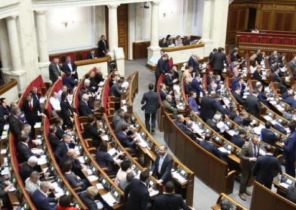June 6 participating countries of the agreement on OPEC+ — as members of the organization, as well as independent oil producers — had held a meeting, chaired by Prince Abdul Aziz bin Salman, the Saudi Arabian Minister and Minister of energy of Russia Alexander Novak. The parties discussed the extension of the agreement to reduce oil production in July to 9.7 million barrels per day.
The country asked the parties to the agreement not fulfilled the norm of production cuts in may and June, to compensate for this lack of a proportional increase in the reduction in July, August and September. According to available information, it concerns Nigeria, Iraq and Mexico, but the latter refused to participate in the reduction. In recent months the Gulf States have taken initiative to voluntarily reduce their production in order to compensate for the lack of commitment by some States. Saudi Arabia announced the reduction in production volumes, as planned by the group, approximately one million barrels per day. The United Arab Emirates and Kuwait have also contributed to further reduction of oil production.
As a result, gradually over the six weeks the price of Brent crude rose from about $ 15 per barrel in the midst of the pandemic in March and April (when the world demand for oil fell by about 30 percent, equivalent to 30 million barrels per day because of reduced demand in the transport sector) to around 42 dollars. On the background of the current trend to reduce production volumes of the parties to the agreement OPEC+ is expected to further increase in oil prices. This will also contribute to the lifting of restrictions and return to normal life in some countries. Another factor is the impending hurricane season in the Gulf of Mexico, followed by the closure of platforms for transportation of oil from the Persian Gulf or the southern States of the USA.
One of the positive signs about increasing oil prices is the reduction of oil reserves in the United States (Cushing) and a noticeable increase in demand in China. According to the Agency Bloomberg, at the end of April demand in China had increased to about 90 percent of its level in the same period last year, that is, before the pandemic coronavirus. China is the second largest oil consumer in the world, and a pandemic began in this country. As a consequence, the rapid recovery in oil demand are encouraged by the markets. It is noteworthy that the demand for oil in February decreased by 40 percent as a result of harsh restrictive measures of isolation and quarantine, announced by the Chinese authorities at the time.
According to the forecast of consulting company Wood Mackenzie, consumption of oil in China will increase in the second half of 2020 is around 2.3%, reaching 13.6 million barrels per day. This increase is due to fuel requirements on transport and factories. The consulting company also expects that the demand for gasoline in China will increase in the third quarter of this year by 2.3% compared to the same period of last year and will reach 3.5 million barrels per day. As for diesel fuel, the demand for the same period will grow by 1.2% and reached 3.4 million barrels per day.
The statement of the parties to the agreement OPEC+ it is also noted that all of the key exporters of oil (not listed) were invited to participate in a relative reduction in order to stabilize markets. Because there are three oil-producing country with a production capacity of more than 11 million barrels per day (Saudi Arabia, Russia and the United States), and Saudi Arabia, and Russia are already involved or even lead the campaign to reduce oil production, we are talking about the United States, whose production, according to available information, has declined by about 1.9 million barrels per day in early June, in accordance with the requirements of the market, however, requires an additional volume reduction was not reported.
The level of production of us shale oil more than other types of oil in the US, affects the total amount of American production. Available information indicates that during negotiations between Saudi Arabia and Russia, held before the meeting of OPEC+, parties take into account the reaction of shale oil production in the U.S., as well as the rate of decline in demand to determine the quantity and period of production cuts. Regarding the cost of shale oil production and therefore prices, which will help to resume work on the closed deposits, estimates diverge. Some of them required price range between $ 40-50 per barrel of oil, while a number of other shale oil need a price in the range of 50 — 70 dollars. This difference in estimates is due to the geological characteristics of each field, where some need tens of thousands of dollars to purchase new materials needed to resume operation, along with the payment of debts.
In determining the amount of reduction of extraction and its duration, the group OPEC+ also takes into account the amount of oil and oil products stored in tanks or tankers. According to the data, the surplus amounted to about one billion barrels, and at such a high figure includes the blow reserves and the accumulated surplus after the start of the pandemic. Experience shows that attempts to reduce inventory is a long process that takes a lot of time. While the oil reserves are large, i.e., exceed the usual level, they will have a negative impact on prices, which will require the parties to the agreement OPEC+ to take into account two important factors: a long-term solution to the problem of lower demand as a result of the pandemic coronavirus and social change, as well as excess oil. Thus, the extension of production cuts is a long-term step towards the restoration of balance in the markets and return prices to previous levels. According to Russian officials, the desired price range is $ 40-50 per barrel, as higher prices, for example, at 70 dollars, and can contribute to an unnecessary increase in oil production.







